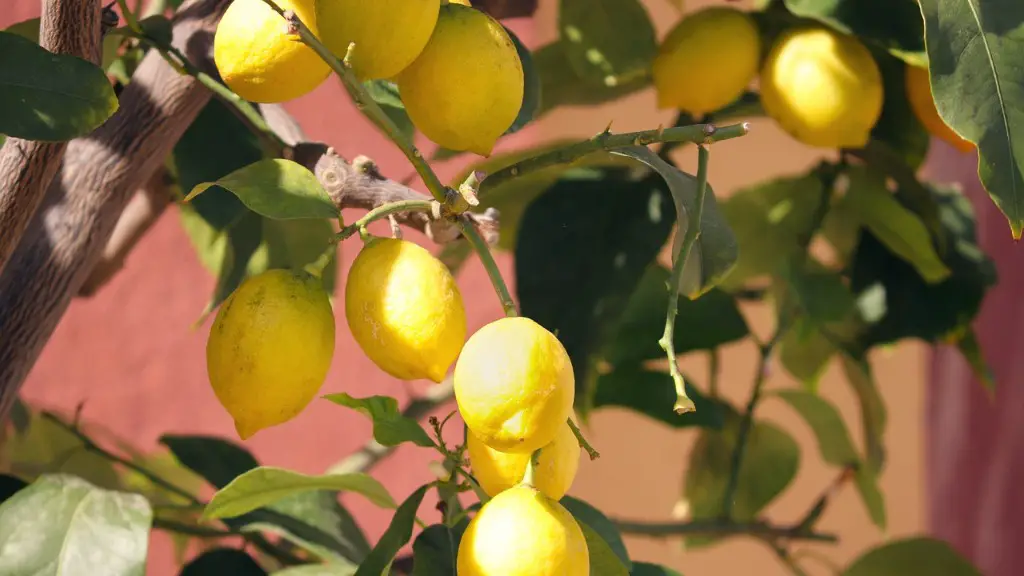Planting a lemon tree may seem like a daunting task, but with a little knowledge, it can be an enjoyable and rewarding experience. The primary factor in choosing when to plant a lemon tree is your local climate. For example, if you live in a region that has cold winters, then planting a lemon tree outside may not work. In that case, you may need to wait until late spring or summer to ensure temperatures are more suitable for your tree.
Another important consideration when deciding when to plant a lemon tree is the growing season. The ideal time to plant is usually during the late winter or early spring, when the soil is adequately prepared and conditions are more favorable. Planting earlier or later can be done if needed, but may affect the health of the tree. Additionally, the earlier you plant the tree, the longer it will be able to establish its roots prior to heat waves or hard freezes.
When planting a lemon tree, it is essential to identify the best place for it to thrive. Site selection matters significantly and can even affect the success or failure of a tree. To maximize the plant’s potential, it is best to plant a lemon tree in an area that receives ample sun and good airflow. The site should also be relatively free of weeds and disease organisms, which can weaken the tree or lead to serious problems.
In addition to the ideal time and place for planting a lemon tree, it is important to prepare the soil. To do this, you will need to identify the best soil type and then blend it with fertilizers and organic matter. This will allow the tree to grow in a healthy and vigorous manner. Once the soil is suitable and of the correct consistency, the tree can then be planted accordingly and watered thoroughly.
Finally, after planting a lemon tree, it is essential to give it the right amount of water and care. Depending on the region, this might involve the addition of mulch to keep the soil moist and prevent weeds from growing. It is also important to help protect the tree from pests and disease by spraying it with a suitable insecticide and fungicide. With the proper amount of care, a lemon tree will soon be bearing delicious, juicy lemons.
Soil for Planting a Lemon Tree
To promote good growth of a lemon tree, the soil must be fertile, well-draining, and free of weeds and disease organisms. When it comes to soil, a lemon tree prefers loamy, nutrient-rich soils, with a pH level of 6–7, and consistent moisture. Adding compost or well-rotted manure will help to improve the structure, drainage, and nutrient supply of the soil. It is important to note that lemon trees dislike wet, waterlogged soil, as they are susceptible to root rot, so it is important to ensure good drainage. Additionally, soil in the area of planting should be loose and well-worked, to ensure that the roots can penetrate and establish a strong foundation.
Fertilizers
Fertilizers are a critical component to maintaining the health of a lemon tree and to maximize its growth potential. Fertilizers provide essential nutrients that the tree needs to grow stronger, establish root systems, and produce good quality fruit. When fertilizing, it is best to use a slow-release fertilizer at planting and then later every two to three months for the first two years, and then once a year or once every two years. Additionally, necessary, it is important to test the soil to determine any other micronutrients that need to be added.
Pruning
Pruning a lemon tree is an essential part of keeping it healthy and producing good quality fruit. Pruning helps to remove dead, weak, and diseased growth, promote air circulation, and encourage new, strong limbs. To properly prune a lemon tree, it is important to know the shape of the ideal tree, as this will guide where and how to prune. Additionally, if possible, prune the tree while it is still young to get it into its ideal shape. Pruning should be done in the winter, after harvesting the fruit, and should be done by an experienced and certified arborist.
Water Requirements
Although a lemon tree is fairly drought-tolerant, it will still require regular watering for optimal growth and health. Typically, a lemon tree requires about 1–2 inches of water per week, which is equivalent to about five gallons of water a week. During the hotter seasons, it may need even more water, especially during the first few summers. Of course, the exact amount of water needed will depend on several factors, such as the location and soil type. Additionally, when irrigating, it is important to water deeply, as this promotes strong root growth and prevents shallow root systems.
Health Care
The health and care of a lemon tree play an important role in the overall life of the tree. To ensure a healthy and strong tree, regular inspection and maintenance should be done throughout the year. This includes disease and pest monitoring, trimming, and fertilizing, as well as sensing for any signs of weak or diseased limbs or trunks. If disease or pests become a problem, it is important to take swift action and implement a suitable treatment.
Harvesting
Once your lemon tree has been established and is producing fruit, it’s time to harvest. Lemon juice and zest can be used in a variety of culinary applications, making them incredibly versatile. When picking your lemons, you can use a pair of scissors or pruning shears to cut them from the tree. It is important only to select fruits that are an even bright yellow, as they will be the sweetest and have the best flavor. When picking, it is also important to leave some on the tree, as pollination of the remaining fruits is necessary for a good crop.

